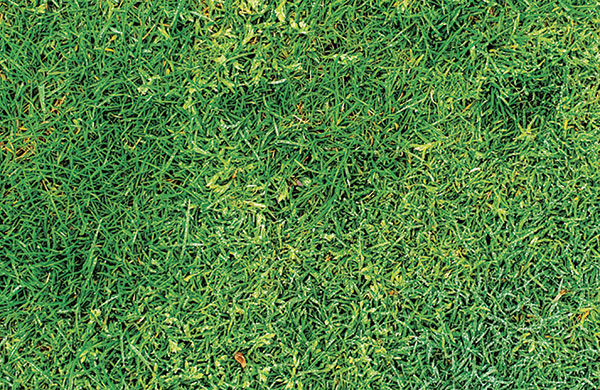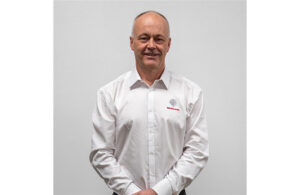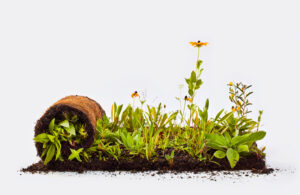Experts’ Insights: Poa no more-a

Poa annua can be identified by boat-shaped leaf tips and a white inflorescence that set it apart from other turfgrass. (Photo: FMC Corp.)
“There’s no easy question concerning Poa annua,” says Jay McCurdy, turfgrass Extension specialist at Mississippi State University.
Poa annua, also known as annual bluegrass, is a grassy weed that’s sometimes used as a putting or playing surface in certain parts of the United States. Poa is widespread throughout the world, but it grows best in temperate climates. It stands out as having boat shaped leaf tips and a white inflorescence.
According to McCurdy, it’s probably the most prolific and adaptable grassy weed that turfgrass specialists combat.
Typically, control options are more limited in cool-season turf, he says, because there’s no chemistry to control it. Many of the cultural practices that could get rid of the weed lend themselves to the culture of Poa, so it becomes a big problem, he adds.
There are some herbicides available to treat Poa in the Southeast; however, they are fairly limited because of herbicide resistance. Poa adapts quickly, and according to McCurdy, if there is a model species for studying herbicide resistance, it’s Poa.
If a superintendent did want to treat chemically, a preemergence program is the best option, McCurdy says. And, as always, the best management tool a superintendent has is healthy, competitive turfgrass, he notes. “If that turfgrass is competitive, Poa has less of a chance to get a foothold.”

Aaron Hathaway (Photo: Nufarm)
Nufarm
Aaron Hathaway
Technical services manager
Poa annua is able to produce and disseminate large amounts of seed in low-mowed turf. Even if a turf manager successfully controls some of it, there is more in the soil seed bank ready to germinate and infiltrate the turf stand. It acts more like a true winter annual in warm-season turf that germinates in the fall and dies the following summer with the heat. In cool-season turf, however, perennial biotypes can persist throughout each season. In warm-season turf, use preemergence and postemergence products in the same season to reduce populations. Stick with it from year to year to deplete the soil seed bank. In cool-season turf, superintendents can apply plant growth regulators (PGRs) and herbicides at low rates throughout the season to slowly reduce populations. Reduce rates and shorten application intervals to slowly convert. The goal is to affect the growth of the annual bluegrass more than creeping bentgrass. Reduce irrigation and nitrogen applications to favor creeping bentgrass even more in the summer heat. When regrassing, have a plan in place to control annual bluegrass in the first year of establishment.

Dean Mosdell (Photo: Syngenta)
Syngenta
Dean Mosdell
Technical services manager
Best practices for controlling Poa annua aren’t simple. In warm-season turf, where Poa annua is primarily an annual biotype, you may apply preemergence herbicides in the fall in non-overseeded bermudagrass. Control escapes with sulfonylurea. You may use nonselective herbicides on dormant bermudagrass. Consider all these options because of Poa annua’s propensity to develop herbicide tolerance. Herbicide options are limited in ryegrass overseedings. Superintendents may mix plant growth regulators with ethephon to enhance Poa annua seed head control. Control in cool-season grasses is more difficult. Preemergence herbicides are selective options in most cool-season turf. Postemergence herbicides have shown variable control with limited turf tolerances. Poa annua is more competitive at lower mowing and as a perennial. Seeding and germination can occur throughout the year, so success with preemergence herbicides is limited. Some superintendents commonly use PGRs for control in established cool-season turf.

Tina Bond (Photo: FMC Professional Solutions)
FMC Professional Solutions
Tina Bond
Technical service manager
On golf course putting greens, Poa annua can impact the playability of the surface. In warm-season turf, it can create voids in the turf canopy during spring green-up. Reducing shade and improving drainage favors turfgrass competitiveness that can outcompete annual bluegrass. Irrigating as needed with deep, infrequent irrigation cycles will assist in reducing annual bluegrass. Applying fertilizers low in phosphorus and nitrogen in fall will maintain turfgrass growth and not encourage excessive Poa growth. Aerification can discourage Poa growth and development. On golf greens, the most common approach is using plant growth regulators. In higher-cut turf, you may achieve effective control with properly timed preemergence herbicides applied in fall, from late August to October. Because of increased levels of resistance to multiple modes of action, implement rotational practices to reduce the risk of selecting resistant populations.

Ian Rodriguez (Photo: Quali-Pro)
Quali-Pro
Ian Rodriguez
Technical services manager, Control Solutions Inc.
Poa annua is a bunch-type winter annual grass that typically is a lighter green than most other turf types, making it a bit of an eyesore. It’s prolific at producing creamy white seed heads that really stand out. It isn’t so bad texturally, but the color and seed production make it stand out as a weed. The biggest problem is it outcompeting other grasses. There are a few places where it’s a desired turf, but in most of the country, it’s a weed. Make sure you have a preemergence program in place in the fall before it germinates. There are some postemergence options, depending on the desired turf, and as always, starting with competitive, healthy turf is key. However, in places like the Southeast, the main turf is going dormant when Poa is thriving, so it struggles to compete. You may use a postemergent in conjunction with a preemergent. Poa is one of those weeds where there is resistance potential because it is so widespread and prolific. One trend I’m seeing is combining active ingredients, along with rotating products.











